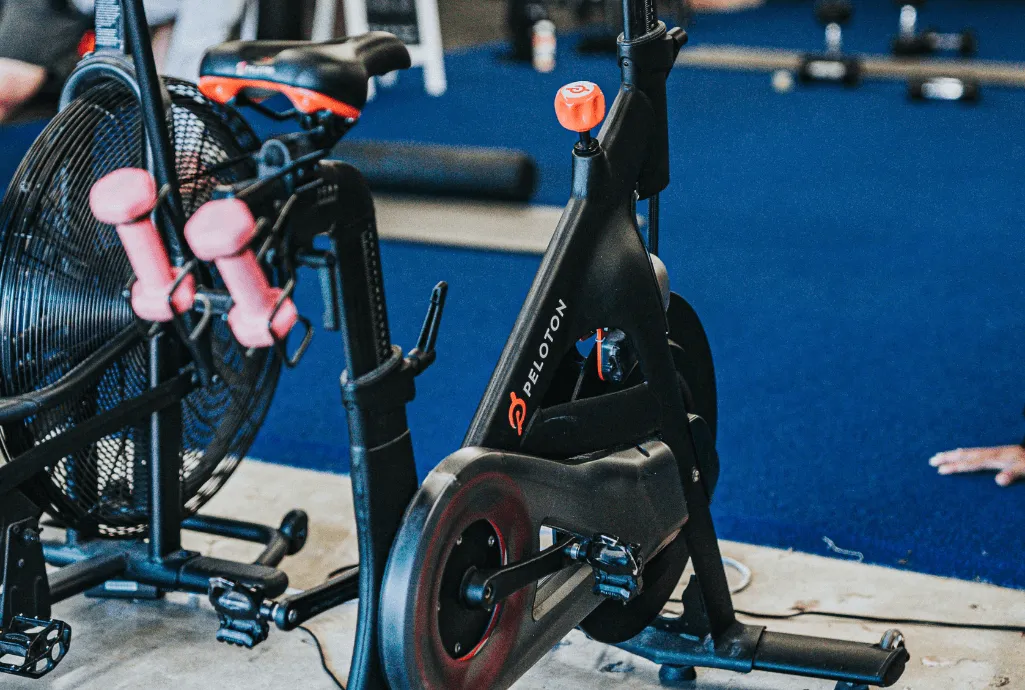Using a Peloton bike allows you to stay fit and have fun at the same time. If you own a Peloton bike, you probably enjoy its smooth and near-quiet performance.
However, you may have started hearing a clicking noise when you pedal. The noise can be annoying and distracting, especially when focusing on your hardest Peloton class or following your favorite Peloton instructor workout-related instructions.
You’re not alone if you’re experiencing a clicking noise when using your bike. Many Peloton users have reported this problem. There are multiple possible causes and solutions for it. Different parts of your bike, such as the pedals or hub, can cause the clicking noise.
Fixing a Peloton clicking noise wheel may entail tightening some screws or cleaning some dirt. Other times, you may need professional assistance.
Read on to learn how to locate and fix the problem with your Peloton bike. By following the steps below, you’ll hopefully have a smooth and quiet ride again.
Table of Contents
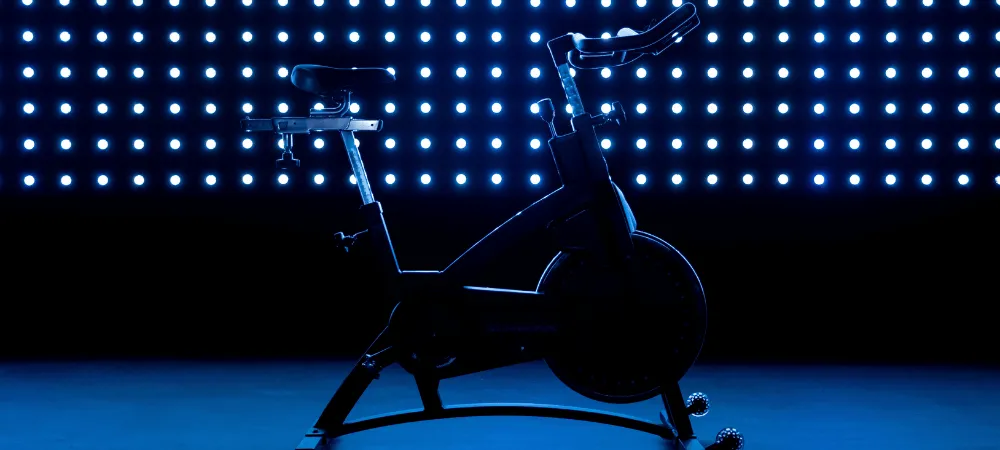
Why Does My Peloton Make Noises and Clicking Sounds?
There are several reasons why a Peloton bike might make noises and clicking sounds. Here is a closer look at some of these reasons.
Broken Parts
When your Peloton bike has some broken parts, it can make noises and clicking sounds during use. Bike parts may break due to wear and tear or even improper assembly. Broken parts can affect the performance and safety of your Peloton bike.
Different parts may get damaged, leading to a noisy Peloton bike. Some common parts that can break include the pedals, crank arms, and belts. The pedals may crack or loosen over time, leading to squeaking or rattling noises.
The crank arms are the parts that connect the pedals to the flywheel. These Peloton bike parts can get loose or bent, resulting in a clicking sound when you pedal.
The belt transfers power from the pedals to the flywheel. It can split due to wear and tear, and it may snap if it gets fixed improperly during assembly. A damaged belt may result in a loss of resistance.
You should check your bike for broken parts from time to time. Do so at least once a week for the pedals. Check the bolts and nuts once each month. For all moving parts, do an inspection every three months.
Direct Contact with the Floor or the Wrong Equipment Position
Placing your bike directly on the floor without a mat can cause several problems. First, the bike can get displaced from its position, and this causes a Peloton pedal clicking noise.
The bike can slip and cause instability when you ride without a mat. Also, friction may damage the bike’s parts over time. To avoid these problems, use a mat designed for Peloton bikes. The mat can help with stability, noise reduction, and protection for your bike and floor.
Sometimes, your Peloton may not be well aligned. That can cause stress and friction on some bike parts, creating annoying sounds. For example, if your seat is too high or low, it may affect the belt tension and make it squeak. If your handlebars are too far or close, it can cause the screws to loosen and rattle.
If you’re unsure of the correct seat height, we recommend reading our comprehensive guide about finding a perfect fit for the best comfort and performance.
Adjust your bike according to your height and comfort level. Do so to avoid wrong positioning. Also, be careful when moving a Peloton bike, as movement can misalign some parts.
Peloton Pedal Clicking Sound Due To Loose Parts
Your Peloton bike may have parts that are not tightened properly. They can cause noises and clicking sounds when you use the bike. For example, loose pedals can make a Peloton pedal clicking sound every time you push down on them. Loose cleats may squeak when you clip in or out of the pedals.
Your bike may also have loose screws or bolts, and they can rattle when you move the bike or change positions. Loose parts can also affect your Peloton bike’s performance and safety. For instance, loose cleats can result in instability.
Bike parts may become loose due to various reasons. For example, say you ride frequently or intensely. That can cause some parts to loosen over time. You may also share your bike with other people who have different preferences. Making adjustments for each user may make some parts loose.
Sometimes, you may need to disassemble and reassemble your bike, like when moving it to a new location. The moving process can cause some parts to become loose.
Peloton Flywheel Bearing Noise Due To Bad Bearings
Bad bearings are another reason you may hear a Peloton flywheel bearing noise. Bearings are parts of the wheel hub that help it spin smoothly and quietly. These bike parts can wear out over time. Water, dust, or improper use can also damage the bearings.
When bearings get damaged, it creates friction and noise as you pedal. You may notice a terrible grinding or rubbing sound from your wheel hub. The Peloton flywheel bearing noise might affect your ride quality and performance.
Bad bearings can also cause your wheel to wobble or shake. That can be dangerous and cause damage to other parts of your bike. Bad bearings are not always easy to diagnose. They may sound similar to other issues like a Peloton crank arm noise.
There are methods you can use to check if your bearings are bad. Try spinning your wheel and feeling for any resistance or roughness. You can also lift your bike and shake the wheel side to side to see if there is any play in the hub. These are signs that you need to replace your bearings.
Unfastened Stabilizers and Pedals
The stabilizers or pedals on your bike may not be well fastened. That can cause an irritating Peloton clicking sound when you ride the bike. The stabilizers are the feet that support and keep the bike frame balanced. The pedals are the parts you attach your shoes to and push with your legs.
If the stabilizers are loose, they can cause the bike to wobble. That can create noises. Luckily, you can check if you have unfastened stabilizers. Try to wiggle each stabilizer and see if it moves. If it does, you need to tighten it until it is secure.
Sometimes, you may have loose pedals that aren’t securely attached to the crank arms. They may move when you pedal and result in clicking sounds. Unfastened pedals can also affect your riding performance and comfort. They can make it harder to clip in and out of your shoes.
You can check if your pedals are unfastened. Try to wiggle the pedals with your hands or feet to do so. If they move easily, you need to tighten them.
Damaged Linkages
Damaged linkages are another reason you may hear a Peloton clicking noise wheel. Linkages are parts that connect different components of the bike. They connect parts like the pedals, crank arms, and flywheel. They help to transfer power and motion throughout the Peloton bike.
Sometimes, linkages become damaged. There are many causes for that. An example is improper installation or adjustment of the bike parts. Wear and tear can also result in damaged linkages.
When linkages get damaged, they can cause friction or misalignment. This can result in your Peloton clicking noise wheel that interferes with your workout. Damaged linkages can also affect how your bike performs and its overall safety.
You can follow a few steps to determine if you have damaged linkages. Check for any visible signs of damage on the linkages. Inspect the pedals, crank arms, flywheel, and resistance knob for any issues. Also, test the bike by riding it at different speeds to see if the Peloton pedal clicking noise changes or persists.
Imbalanced Flywheel
The flywheel is the large wheel that spins when you pedal. It is made of cast iron and weighs around 38 pounds. It provides resistance and momentum for your workout.
The flywheel should be well-balanced and aligned with the rest of the bike parts. If it becomes imbalanced, it can cause wobbling. This can create bothersome noises and clicking sounds. An imbalanced flywheel can also affect the smoothness and accuracy of your ride.
There are various causes of an imbalanced flywheel. Some of the common ones include the following:
- Defective or worn-out bearings that support the flywheel
- Loose or misaligned screws that attach the flywheel to the frame
- Damage or deformation of the flywheel due to impact or wear
- Improper installation or adjustment of the flywheel
To identify if you have an imbalanced flywheel, you can try to spin it to see if it wobbles or makes any noise. You can also check for any visible signs of damage. These include cracks or dents on the flywheel.
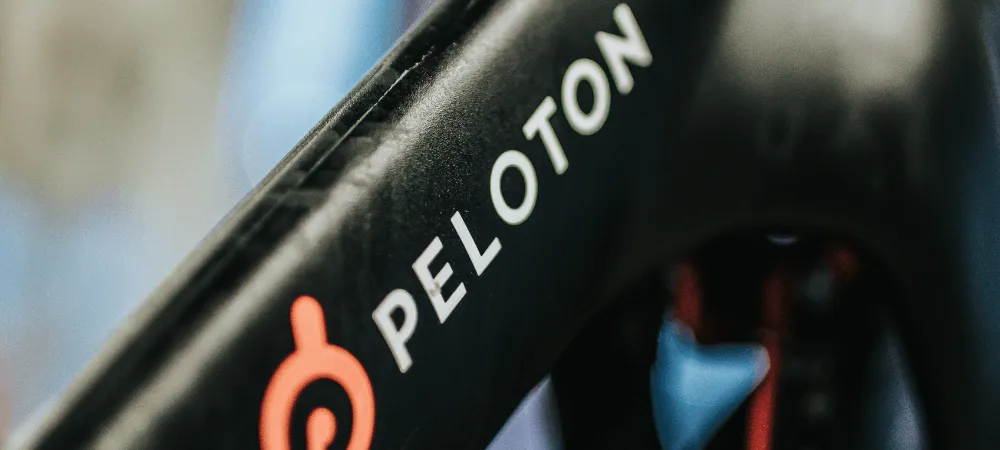
Common Peloton Noises and Solutions
Having a studio-quality workout at home is pretty amazing. However, noise from your Peloton bike can ruin your experience. Here is more on some common Peloton noises and how to fix them.
Peloton Clicking Noise Wheel
One of the common noises that can come from your Peloton bike is a clicking noise from the wheel. The sound can be quite annoying and distracting. However, it can get fixed. Before fixing the Peloton clicking noise wheel, you must understand the root cause.
The clicking noise may develop if the front wheel is not properly attached to the frame. To fix this, make sure the wheel is firmly secured. Also, make sure that the quick-release lever is in the closed position.
Your Peloton bike may be well assembled, but the clicking noise doesn’t stop. This could point to an issue with the hub. The hub is a part of your Peloton bike wheel that connects to the axle and holds the bearings.
As you keep using the bike, the hub may get worn out. The bearings may become loose. The result of these two things is a clicking sound when using the equipment. Securing the spokes can help you eliminate the noise.
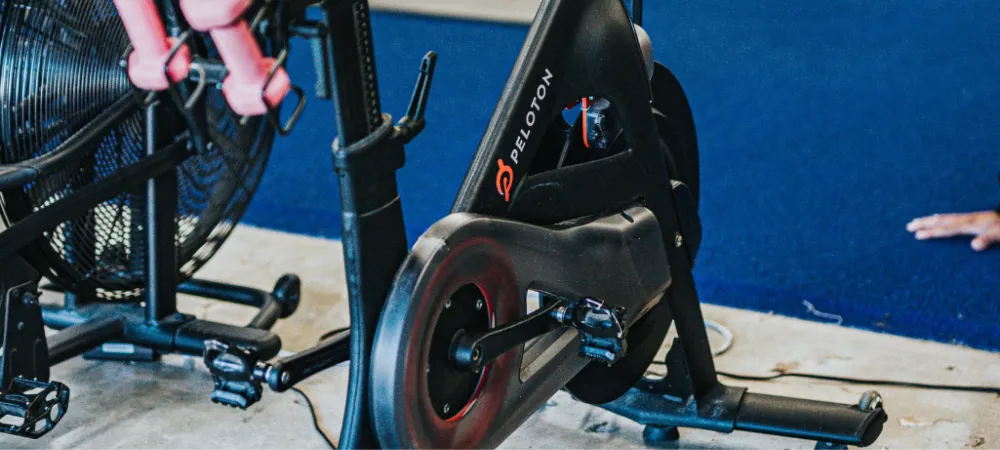
Peloton Pedal Clicking
Some pedals have a steel cage around them. The cage can hit the crank arm as it rotates, making a clicking sound. Despite being irritating, this clicking sound is normal. Also, it doesn’t harm the equipment in any way.
Another cause of Peloton pedal clicking is accumulated dust and debris. When dirt accumulates, it can lead to friction. This can make a clicking noise when you pedal. You can fix this problem by cleaning the equipment.
Use a soft wet towel to do the cleaning. After you’re done cleaning, take time and move the pedals. Doing so helps you check if they are turning as required.
While dirt can cause a clicking noise, it’s not the only culprit. You may have used the bike for an extended period, causing the pedal threads to dry. Greasing the threads can help eliminate the clicking sound.
Also, take time to fasten the bolts on your Peloton bike. Making small changes can go a long way in getting rid of the clicking sound.
Peloton Crank Arm Noise
Many Peloton bike users face the problem of noise from the crank arm. The Peloton crank arm noise may be due to a manufacturing defect. Peloton knows about the problem and is in the process of working on a solution.
There are certain things you can do to reduce the annoying sound. For one, you can use a tool to secure the crank arm if it’s loose. A loose crank arm may wobble when you pedal, causing some noise. Tightening it can offer a solution.
If it is too loose, it will make a rattling noise. You can also lubricate the crank arm using a silicone-based lubricant. This will help reduce the noise.
Another possible cause of the clicking noise is dirt accumulation in the belt area. This can cause the crank wheel to rub against the cover. To solve this, you can remove the crank belt cover and clean the belt. This will remove any debris that may be causing friction.
After doing all that, you may still have some problems. If so, reach out to Peloton for more assistance.
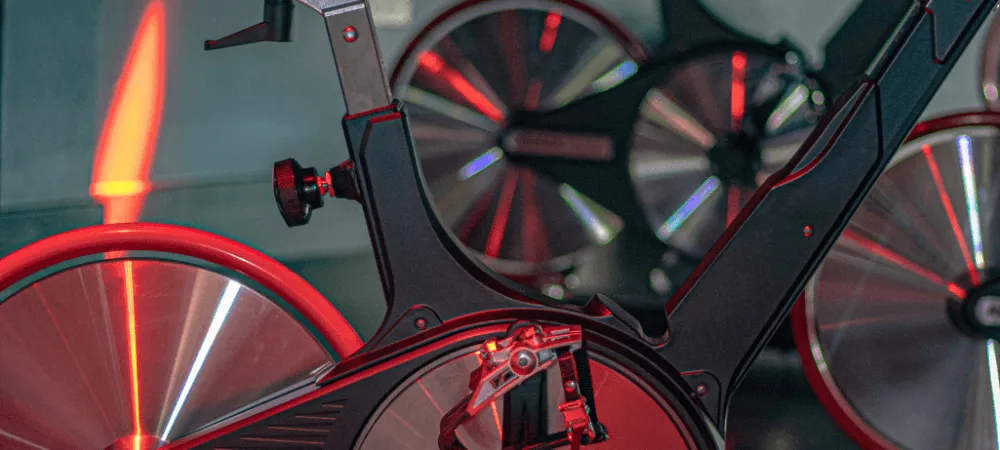
Peloton Flywheel Bearing Noise
Over time, dirt and debris can accumulate on the flywheel bearings, causing them to be noisy. That may happen for several reasons. One is if you place your Peloton bike in a dusty environment.
To fix this issue, you’ll need to clean the flywheel bearings. First, unplug your bike and remove the flywheel cover. Then, remove any dirt or debris from the bearings. Finally, apply some lubricant to the bearings to ensure they move smoothly.
Another possible cause of Peloton flywheel bearing noise is worn bearings. It occurs if you have had your bike for a long time or if you use it a lot. Replacing the flywheel bearings is the best solution to the problem. Order replacement bearings from a Peloton and get them installed.
If your flywheel is loose, it can cause noise as it moves around on the bearings. The fix for a loose flywheel is tightening it. Secure the flywheel bolt. Be careful not to overtighten the bolt, as this can cause damage.
Peloton Shoes Clicking Noise (Squeaky Noise)
One common cause of Peloton shoes clicking noise is loose cleats. The cleats on your shoes may not be well fastened to the pedals. Hence, they can move around and produce noise.
To fix the problem, you must tighten the cleats. First, unclip your shoes from the pedals and tighten the bolts that hold the cleats in place. Be sure to tighten them evenly to ensure proper alignment.
Another explanation for the clicking sound is worn cleats. Your cleats may have become worn or damaged. So, they may not fit well on the pedals, causing some noise.
If the problem is worn cleats, you must get a replacement. You can order replacement cleats from Peloton. Once you have the new cleats, remove the old ones and install the new ones per the instructions.
Other times the angle of your cleats may cause the clicking noise. Try shifting the angle of your shoe as you pedal. Ensure that no part of the shoe comes into contact with the crank arm.
Peloton Clicking Sound When Out of the Saddle (When Standing and Riding a Bike)
Have you ever experienced a Peloton clicking sound when you’re out of the saddle riding your Peloton bike? Well, you’re not alone in this. It’s a commonly encountered issue that can result from several factors.
Loose disks on the front of your bike could be the culprit. To resolve it, you’ll need to tighten the disks under the front wheels. You can get someone to help you lift the bike so you can fix it.
Another reason for a clicking sound could be a loose frame. In such a case, you must tighten the frame to the base crossbar holding the legs. This will eliminate any movement that could cause noise while standing and riding.
Uneven stabilizers and transport wheels may also cause clicking noises. Fixing it involves ensuring the wheels are leveled and placed on an even floor. Also, tighten any loose screws to prevent further clicking.
Peloton Belt Noise
One common cause of Peloton belt noise is a loose belt. If the belt is not properly tensioned, it can slip or move around, causing some noise. You’ll need to adjust the belt’s tension to solve this issue.
First, unplug the bike and remove the cover. Then, adjust the belt’s tension by turning the tension screw clockwise to tighten or counterclockwise to loosen. Ensure you test the tension by spinning the pedals before reassembling the cover.
Another possible cause of belt noise is a dirty or worn belt. Such a belt may not move smoothly, causing some noise. A solution for this issue involved cleaning or replacing the belt.
If the belt is dirty, wipe it down with a clean, damp cloth. If the belt is old and worn out, get a replacement. You can order replacement belts from Peloton. Sometimes, some problems may be significant and require the help of an expert. You can reach out to Peloton customer support for help.
FAQ
Here are some frequently asked questions regarding Peloton clicking noise wheel.
How to avoid getting the clicking noise on your peloton bike?
Tighten all bolts and nuts to eliminate wobbling. Check pedals and cleats for proper attachment. Regularly clean and lubricate your bike to prevent friction and debris buildup.
How do you lubricate Peloton?
Use a clean cloth to wipe down the bike and remove dirt or debris. Apply some lubricant to the moving parts of the bike. Spin the pedals to distribute the lubricant evenly. Wipe away any excess.
Do Peloton bikes need maintenance?
Yes, Peloton bikes require regular maintenance, like any exercise equipment. Maintaining these bikes helps keep them running smoothly.

